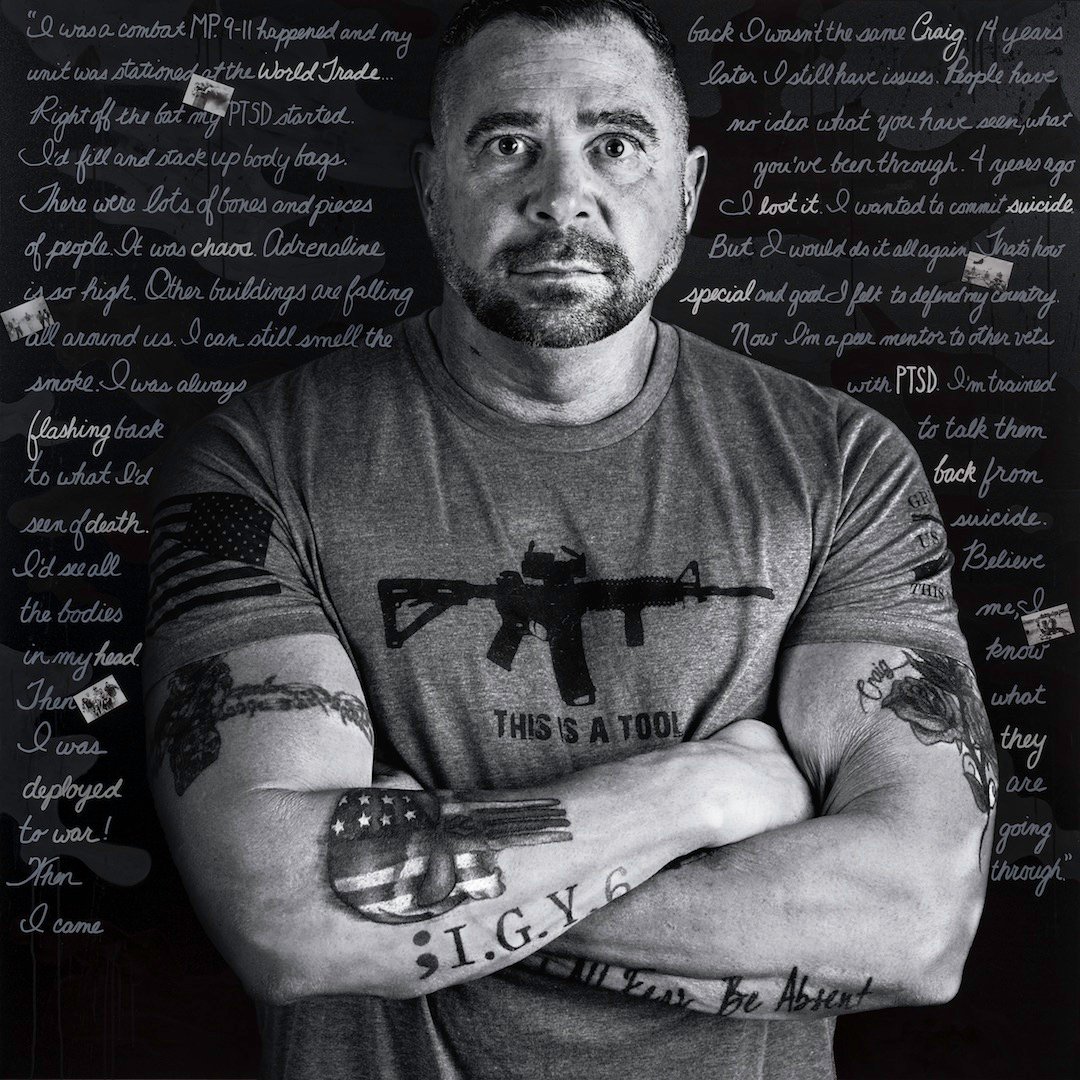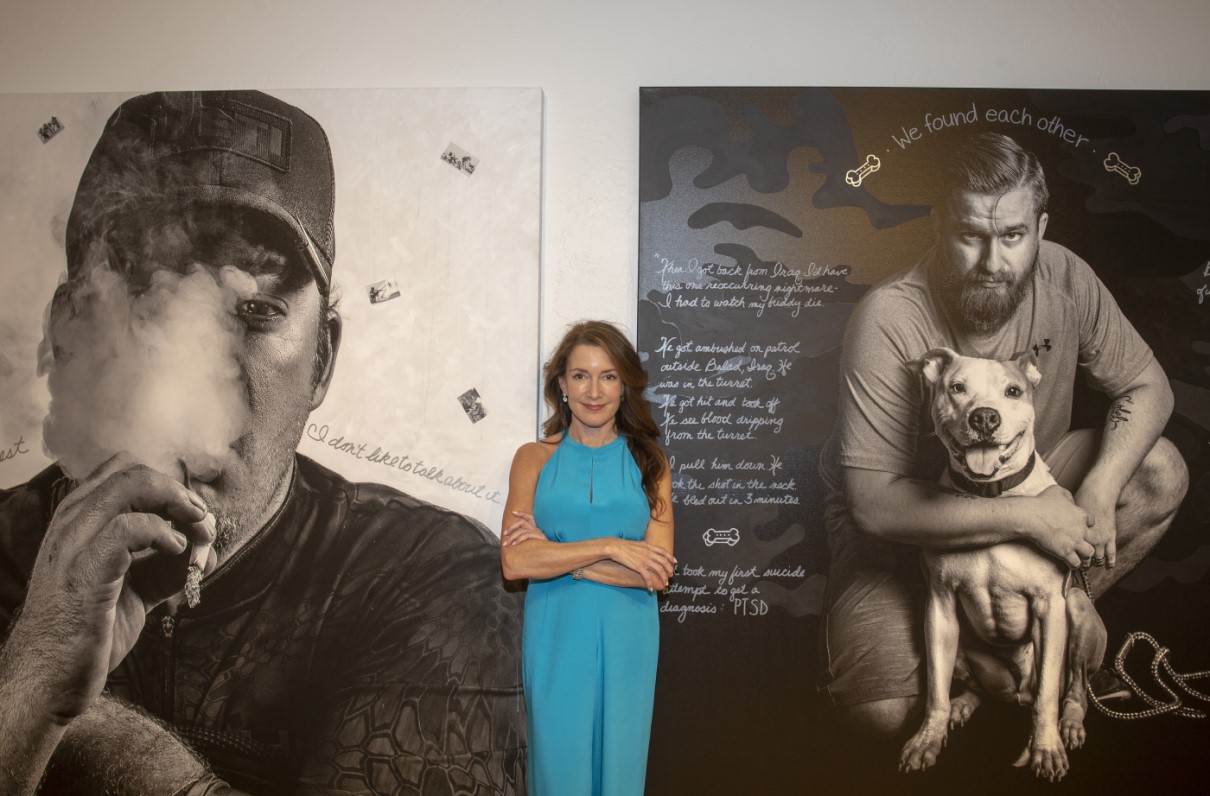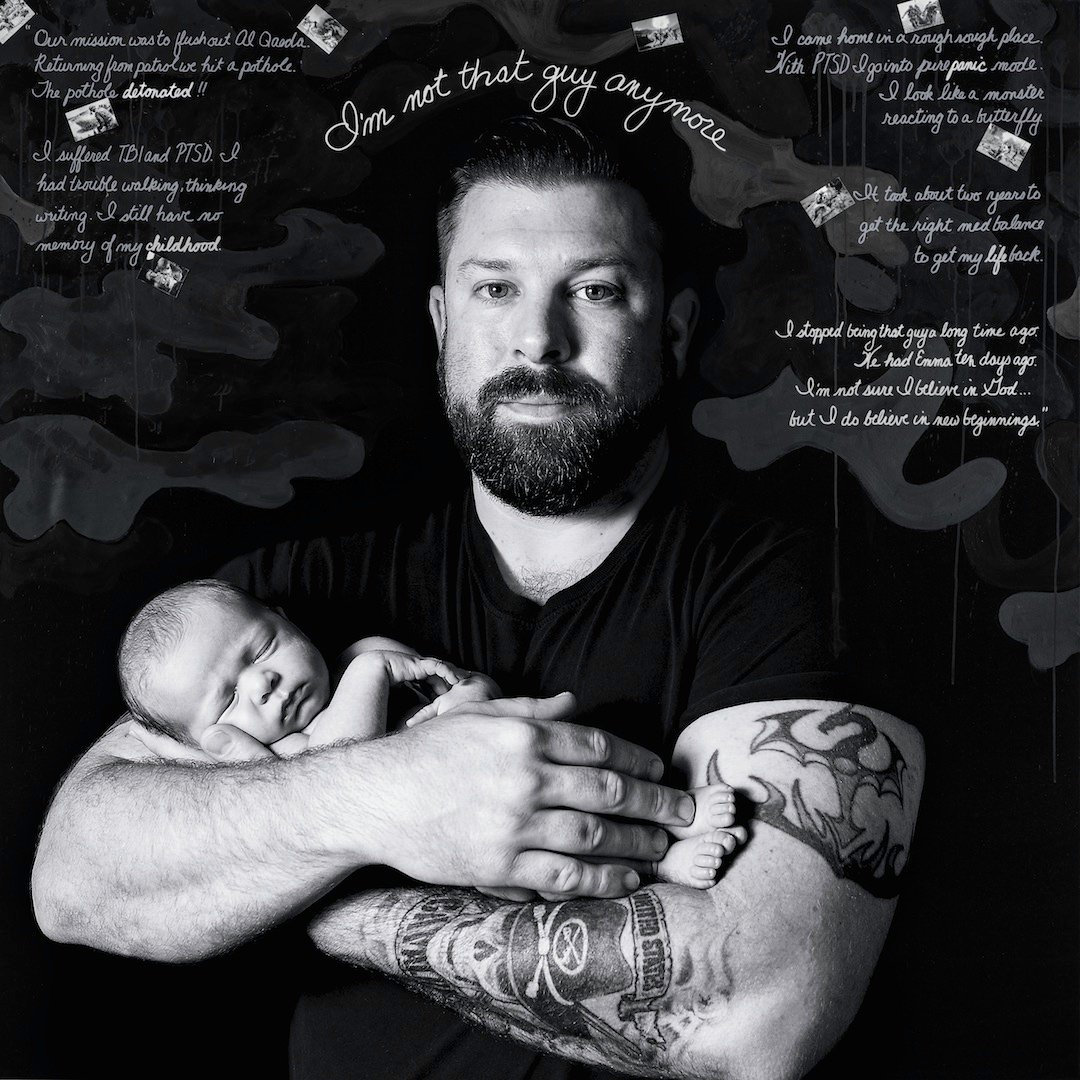(Editor's Note: This article will appear in an upcoming edition of Military Officer, a magazine available to all MOAA Premium and Life members. Learn more about the magazine here; learn more about joining MOAA here.)
Artist Susan J. Barron hopes to captures a different side of veterans - and to help shed light on their struggle with post-traumatic stress.
In Barron's large-scale, mixed-media portraits, veterans are posed to show off their patriotic tattoos or long, wild hair. Instead of a rifle, one veteran cradles his infant daughter. Their stories and images vary, but these veterans are connected through their battles against post-traumatic stress.
Barron, an award-winning artist, set out to raise awareness of the post-traumatic stress and veteran suicide through her project, “Depicting the Invisible: A Portrait Series of Veterans Suffering from PTSD,” on display at the Army and Navy Club in Washington, D.C., from Feb. 15 through April 15.
(Courtesy image)
The members-only Army and Navy Club will be open to the public on Saturdays until April 15 from 11 a.m. to 2 p.m., except March 2. A private exhibition for club members and guests is set for Feb. 15 at 6:30 p.m. The club's dress code requires a coat and tie for men and comparable attire for women. Find out how MOAA Life Members can save on Army and Navy Club membership.
“I think that all Americans owe our veterans a huge debt of gratitude,” Barron told Military Officer. “As an artist, I thought this story was a story that needed to be told. I could support veterans that need to have a voice.”
Barron traveled the country to meet veterans to understand their struggles. In 2018, she created the project, in which portraits of 15 veterans are inscribed with their personal stories of overcoming post-traumatic stress.
Q. Did anything surprise you as you worked on this project?
I would say that one of the things I found so inspiration and didn't expect was the incredible love of life that these veterans have - the appreciation, the gratitude. They walk with such gratitude and dignity in the face of trauma. One of the veterans said to me that when you almost die three times, you just start living life to the fullest. I just found inspiration in their grace and their gratitude.

(Courtesy image)
Q. What message do you hope your art sends about veterans?
I would say that many of these veterans feel forgotten and feel that nobody cares, and I think that it's really important to shine a light on this PTSD epidemic. I hope veterans can walk away feeling that their voices have been heard. I hope these portraits are able to inspire civilians to step up and make a difference. I think that, for many families of veterans living with PTSD, they have told me these portraits and stories helped them to have empathy and understanding for their family members in a way they didn't have before. As one of my veterans said, if we don't talk about these stories, we can't save these lives.
Q. What was the most challenging part of working on this project?
One of the most emotional parts of this project for me was right before our New York City opening, I heard from one of the veteran's mothers that he had succumbed [to suicide]. It's really devastating. I think it only highlights what a struggle PTSD is. This is why we're telling these stories, so we can make it better for them. We need to inspire people do to the research, get the funding, find new treatments, support these veterans the way they need.
Amanda Dolasinski is MOAA's staff writer. She can be reached at amandad@moaa.org. Follow her on Twitter @AmandaMOAA.


